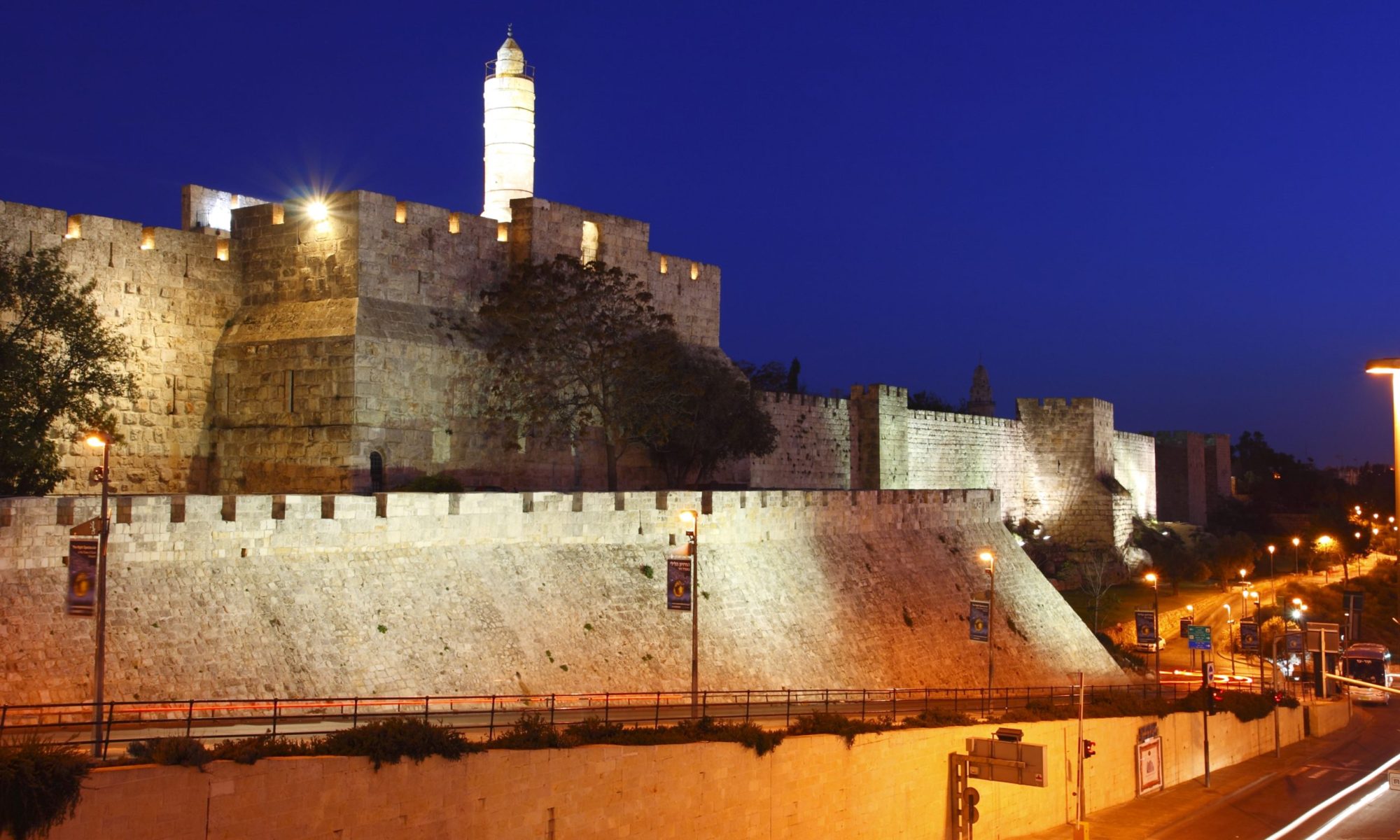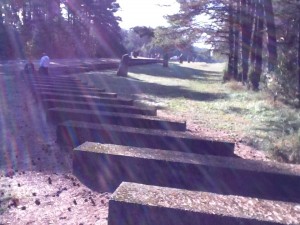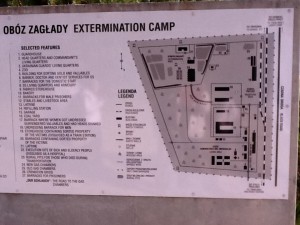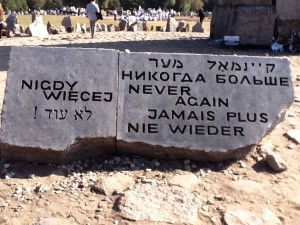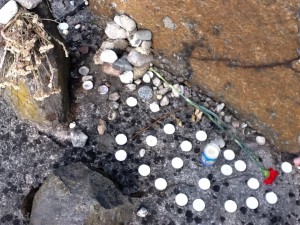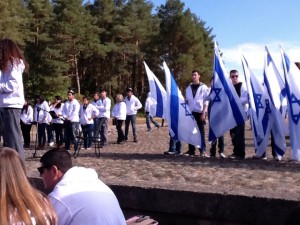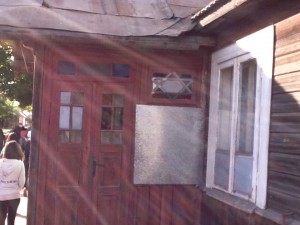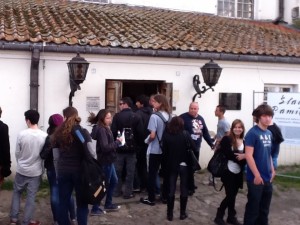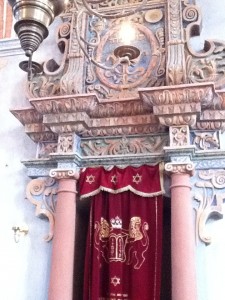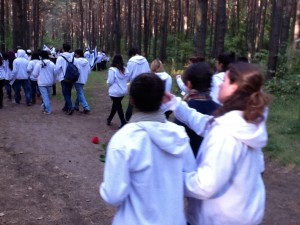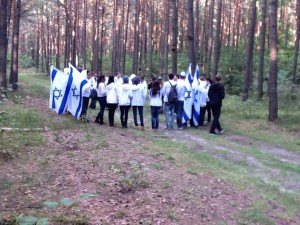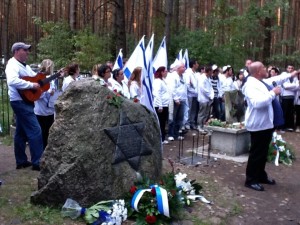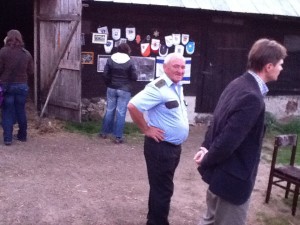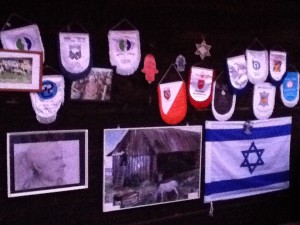From Warshaw to Treblinka
The movie we watched on the way from Warshaw to the death camp in Treblinka was “the pianist” based on the true story of Wladislaw Spielman. Years later the Natzi officer who helped him at the last days got the title of a rightous among the nations from Yad Vashem for his part in saving his life.
Now we are watching the movie “the escape from Sobibor”, this was one of 3 death camps built to solve the Jewish issue during the Reindhart Operaton, Sobibor was the most secretive of all 3 camps. These camps were built on 1942 according to Himler’s decision to initiate the “final solution” for the Jewish problem.
Treblinka
Together with Sobibor and Belzen these were 3 death camps to kill all the Jews from the “general governament”, mainly from Warshaw and Radom, no work here, no concentration camp, just death
On July 1942 there is a telegram to the Ghetto in Warshaw saying that Treblinka camp is ready to operate. Since July 24 and on thousands of Jews were sent here straight to death, while Germans kept exact lists of all these who are sent here and arrive to the camp. They keep few here to run the camp, but most people who arrived here by train never left, the train with 60 wagons stops 3 km from the camp, at a small village not far from here. The camp is inside the forest, kept secret, surrounded with barb wire, Germans didn’t want anyone to know what is going on here.
Fence around the camp is very primitive, no mine fields, just guards and wire. Not too many escaped the camp. There was an attempt to revolt at Treblinka, few tried to escape, not too much luck. They were few survivors, not too many
Commander of this camp was Frantz Schtengel. He was always dressed in white. Trains to the camp would take much longer than excepted. Train would arrive to the station in Melchinia, the village 3 km away from the camp, then Germans would send 20 wagons at a time inside the camp, into the gas chambers, while the others are kept in the station with no water and no food, waiting to get inside the camp. The curve we see is the turn of the train the goes into the camp:
Doors were locked from the outside, as the train gets to the station inside Treblinka, SS soldiers would hurry them all out of the train, separate men from women and children and send them to the gas. Someone who was sent to inspect what is going on here was sent by the Jewish fighting group “Eyal” to the train station in Melchinia, he realizes that all the trains arriving here but no train is going out of here, more than that, no food transports are brought here, no evidence that people are kept in the camp, so they understand that these who get here only get to their death.
There is a song called “this is the station Treblinka” by Yehuda Poliker, talking about the train arriving here. No selection as the ramp, just if they needed certain professions they would find them, otherwise they would be sent to death. No living people left Treblinka or Sobibor, very few people survived, not more than that. Of all the 900,000 people who arrived here, around 5 survived, mainly cause they managed to jump from the train or survive in a miraculous way
The camp was closed by the Germans at 1943 when they managed to kill all Jews from the “general governament”, around 2.2 million Jews were murdered during 1 year more or less. Once the camps were closed, all the other Jews would be sent to the biggest death camp of them all, Auschwitz Birkenau
A short part with a melody from the Mezeritch Orthodox community, talking about “I believe in full believe in the coming of the Mesiach, tho it will take long, he will eventually come”. How can you believe in such a place? How can you keep waiting for the Mesiach to come and hope he will arrive before you get to the camp?
Camp plan at the entrance to the camp:
The entire camp could be explains in 5 numbers: the camp’s grounds were 400 * 600 meters, operated by 30 SS men and 120 Ukraine Wachmen who helped them, was active for 13 months and killed 874,000 Jews during the year it was opened and also some gypsies. Jews here were killed by CO coming out of gas engines, and the bodies were then burned on an open fire at the end of the camp.
The clock at the train station in Treblinka always said 6, Jews were suppose to give their property and they even got a receipt for it, they were told to write letters to their families behind, and the Germans sent these letters to the families, all part of the deceiving and making them think that there is no death here. The sick and weak people were sent to the so called “clinic”, a deep hole with fire burning in it, German soldiers would shoot them and they would fall into the hole. Outside there were people dressed in white like medical team, here was a red cross outside, another part of the deceiving, all these who were sent there fell into the fire.
One of these Ukraine soldiers was Iwan Demyanyouk, we are not sure if he was “Iwan the terrible” from Treblinka or if he was in Sobibor, he went to trial in Israel in 1988 and wasn’t found guilty because the evidence against him were not 100% proven. He was then trialed in Germany for his part in Sobibor and is now in prison for 7 years. This was a very famous case that took place in Israel years ago, went to the US and from there to Germany.
From the ramp the road leads into the gas chambers. First the Jews took off their cloths, they cut their hair, cloths are sorted out and then sent back to Germany, women’s hair is cut, people are then sent into the “schlouch”, a path that led into the gas chambers. Germans called this “stairway to heaven” or in German “hiemel strasse”. At it’s end, there was a sign saying “this is the gate to god, only righteous will go through it” – people would be pushed inside, gassed and die after 20 minutes. There were 2 operators there, Iwan and Nikolai, both ukraines. People were screaming, crying, praying, slowly there was silent and they all died. They are first buried, but Himler ordered to dig the bodies out and burn them not to leave any evidence, to keep it all in secret.
This is the perfect crime as far as the Germans, no bodies, nothing is left here, camp is destroyed in 1943 and is turned into a farm of a polish guy who lives here and builds his house with bricks from the gas chambers. Russians arrive and local polish people come here, dig the ground to look for gold, and the municipality then turns this into a memorial site on May 1964, memorial for all the communities who arrive here in Treblinka, 17,000 communities in total.
This is the location of the gas chambers, now a monument:
Never again – this is the inscription at the entrance to what used to be the gas chambers:
We hear here the story of 1 child from school and his family and leave stones with names of victims we want to remember, individual memory of one community, one person from that community, we listen to the story of 9 years old Esther, through a letter she wrote her uncle in Israel then, she lived in Ostrowiec before the war, was very Zionist, wrote in Hebrew and wishes she lived in Israel. Esther Bleiberg is killed here at the war.
We listen now to a song while we leave stones with names here:
Click on this to listen to the song “I Believe” by Yehuda Dim
Candles were left to burn in their memory:
And we end the visit with a ceremony performed by the kids.
Sobibor
250,000 Jews were killed in Sobibor, but there was a revolt there and the story of that revolt is in the movie “Escape from Sobibor”
Tikotzin or Tiktin as the Jews called it in it’s glory:
This small village is an hour away from Treblinka. Time here stopped, it looks as it looked like years ago. Jews here were 70% Of the population, this is a typical Jewish “schteitel” and before the war this was all very Jewish. The house in the photo was a Jewish home, place of the “melamed” teaching kids above 3 years old to read and pray. You needed minimum of 10 families here to have a “minian” and this becomes an important village on the 16th century. Eve of the war we have here around 2500 Jews here, they have flower mills, they are shoe makers, fishermen and all the other classical things Jews did.
July 1941 in preparation to the Barbarosa Operation, special killing groups came in and started killing Jews. These Einzatsgroupen took people to the woods, shot them and throw them into holes in the forest. Rabbi and the leaders of the community meet and try to understand what is happening. Russians have left, Germans came back and now local polish people lynch the Jews, kill them, burns them and the Jews are worried. They remember the Germans as cultural people, so they decide to tell Jews to meet at the market place. August 25 1941 all Jews are here, waiting, German soldiers surround the square with tracks and machine guns, at 07:15 Germans take 1400 people from this town to the unknown.
Synagouge of town:
Inside the synagogue, center of Jewish life in town:
Synagogue has around 1000 seats in it, very big, used only for Shabbat and holidays and it was build already in the 16th century, at 1642. This was the center of life for many generations of Jews. Lots of connections between this town and Jews from Amsterdam, even the font on the walls here is the Amsterdam font. Town stopped to developed when the railway went around it and bypassed it, this is why it’s as if it was frozen in time. Today this synagogue is the museum for the history of the Jews of Tiktin. It’s not used any more by Jews.
We have here a short ceremony, with couple of songs:
Killing area at the woods outside of Tiktin
We are walking into the woods exactly as the people from here walked years ago. All delegation members have flowers in their hands, on the way where all Jews of Tiktin were murdered.
Prayer circle in the forest:
The path into the woods where Jews were taken:
This is one of the places where jews were taken to be killed:
August 25, 1941 all these Jews from Tiktin, total of 1400 people were taken into the forest, put in line and killed. Day later the rest, 700 more are taken and killed at the second hole. End for this great community here. The two friends who were sent home before follow the group into the woods, they meet few more who survived, but the Germans look for them, they are all captured, 25 of them come back after the war. Another person was shot here in the hole, but managed to stay alive and get out of here, he wrote a testimony before he was captured again and sent to the camps by the Germans.
3 holes are here and all Jews from Tiktin are baried here. We each have a name and life story of a person who was killed here.
Wyrziki
We are here in a small village, where we came to meet with a righteous among the nations. This man’s grandfather saved Jews during the war and hid them in a pigs place, which is now turned into a barn. He is now wearing Israeli army shirt, paratroopers barrett and has ranks on, all souvenirs from Israeli groups visiting
This village is not far from the Lochopova forest, where the community of Tikitin was murdered. The family here is the Gusk family, Chana and Meitek (the farmer from this village) learned at school together, she is hiding in the woods near the village Wygoda, they are hiding in a flower mill near by, and the father of the Friedman family asks Meitek to hide them. We met now with the son of Meitek, he is in the photo.
They dig a small hole under the pig’s place and hides there 8 people in total, they spent time in the forest and came back to hide, very secret, careful not to let anyone find out, they were hiding here for around 20 months till one day 3 soldiers came here and they had to leave and came back. Towards the end of the war they had to leave, Chana’s father is shot, she and her mother hide under the bridge and freed at August 21, 1944. The father died before but the mother died only a month ago, August 2011. They risked their life just to save Jews since they were human beings.
